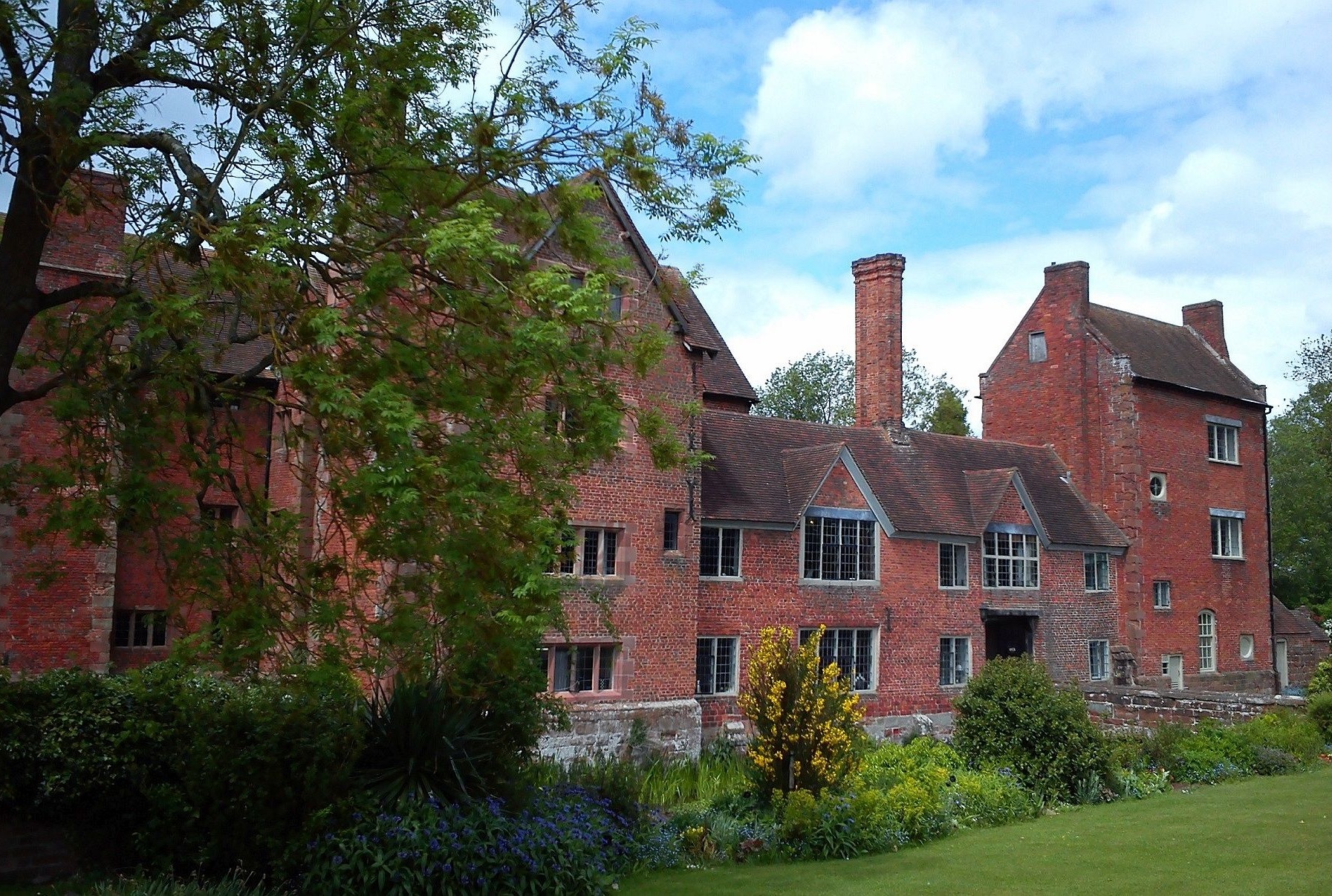
Harvington Hall
Harvington Hall is a medieval and Elizabethan manor house in Worcestershire, England.
The building was built at the end of the 16th century by order of Humphrey Pakington (1555-1631), a fervent Catholic who lived at the time of Elizabeth I's harsh penal laws against Catholicism in England.
The house keeps secret places, in which Catholic rites continued to be performed, becoming the house with the most places like this in all of England.
Origins & History
Harvington's moat and artificial island can be traced back to the 13th-century, older than the bulk of the 14th-century building work survives behind a layer of bricks. The Hall's centre block was probably the solar of a typical H-shaped timber-framed building.
Adam de Harvington (c.1270-1344), Chancellor of the Exchequer, lived and, probably, died there in March 1344. After his death, the estate was passed into the hands of the 11th Earl of Warwick and, in 1529, was sold to a wealthy lawyer, Sir John Pakington.
Sir John Pakington's great-nephew, Humphrey Pakington, inherited the estate in 1578, who transformed this manor with features that are most well known for today. Though the Hall's scale is large in the present day, it's currently only about half of its original size as two additional wings were demolished in around 1700.
The reasons of the demolition are untraceable now, but a clue of the size of the Hall was documented in 1595, which describes the Hall as "Humphrey's Mansion House of Harvington".
Humphrey was a recusant, which means that he refused to abide by the practices of Church of England, such as attending the church service on Sundays, a refusal that was extremely costly towards his finances.
In 1585, it became illegal for a Catholic priest to set foot in England, which prompted Humphrey to construct numerous priest holes in the Hall for the protection of Catholic priests or followers. These priest holes have remained till today. Most notably, some of them were the handiwork of the master carpenter Nicholas Owen, a Jesuit lay brother.
Pakington and his family, despite the Protestantism of Queen Elizabeth I (1533-1603), continued to celebrate mass and since Catholicism was prohibited they had to do it in secret.
Humphrey Pakington (1555-1631) died in 1631 and left the Hall to his wife, Abigail Sacheverell (c.1590-1657), as the dower house. When Abigail died in 1657, she left the Hall to her daughter, Lady Mary Yate (1610-1696), who died in the Hall in 1696 at the age of 85, outliving her son and grandson.
The Hall was inherited by her granddaughter, another Mary Yate. Mary was married to Sir Robert Throckmorton of Coughton Court in Warwickshire, the son of Sir Francis Throckmorton. Sir Robert had little use for Harvington Hall and demolished two wings.
In the 19th and early 20th centuries, most of the furnishings were stripped, leaving Harvington in a bare and dilapidated state.
In 1923, Mrs. Ellen Ryan Ferris (1870-1955) purchased and gave Harvington Hall to the Archdiocese of Birmingham.
Today
Harvington Hall has four chapels, two in the house itself, one in the gardens, and one facing the current car park. Three of them are still in use today.
The gardens are beautiful and surrounded by a moat with lots of wildlife.
Additionally, there is an herb garden run by the Hereford and Worcester Fund that bears the initials of the three families that have lived here: the Pakingtons, the Yates and the Thockmortons.
Throughout the year there are usually special events such as concerts, open-air plays or live stories about the history of the house. There is also a gift shop, a tea house and inside, some curious drawings on the walls that were found in 1936.
This website is developed by Westcom, Ltd., and updated by Ezequiel Foster © 2019-2022.



